In the late 1800s, flowering orchids were considered more valuable and exotic than any other plant.
What was once a flower of the elite – rare and glamorous and known as the ‘plant of kings’, is now available to everyone as a fairly common houseplant.
The flowers can last up to 3 months when they are well cared for. Today orchids are often used as replacements for fresh flowers, their longevity cheaper than buying new flowers every few weeks.
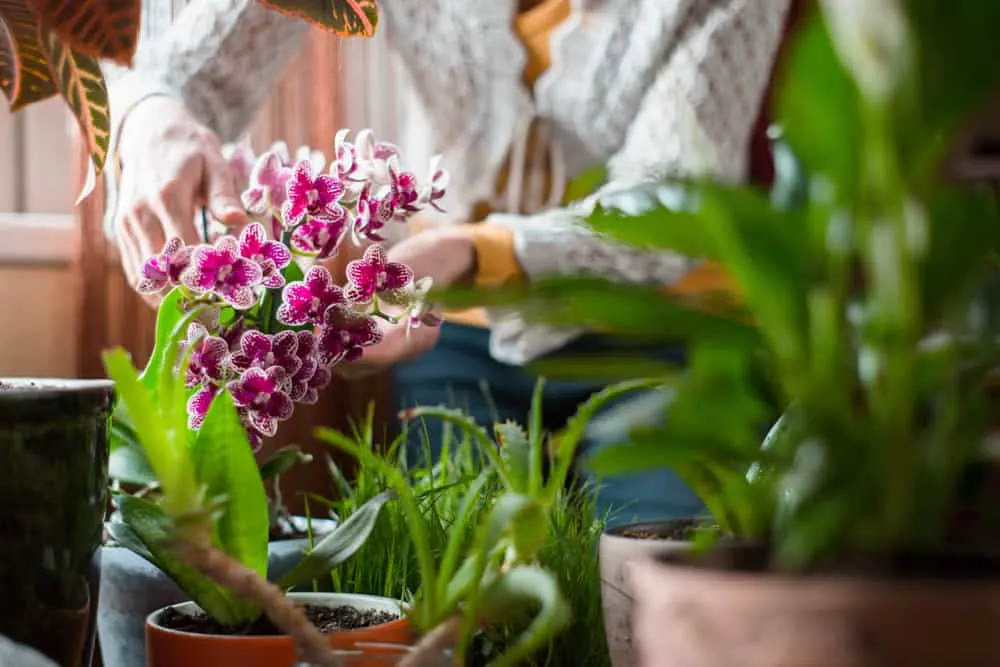
Unfortunately, like fresh flowers, they are often discarded once they have finished flowering. Many believe getting them to reflower will take a lot of time or work.
But with the right care, that’s not always the case.
Follow these care and maintenance tips and your orchid will continue to bloom year after year.
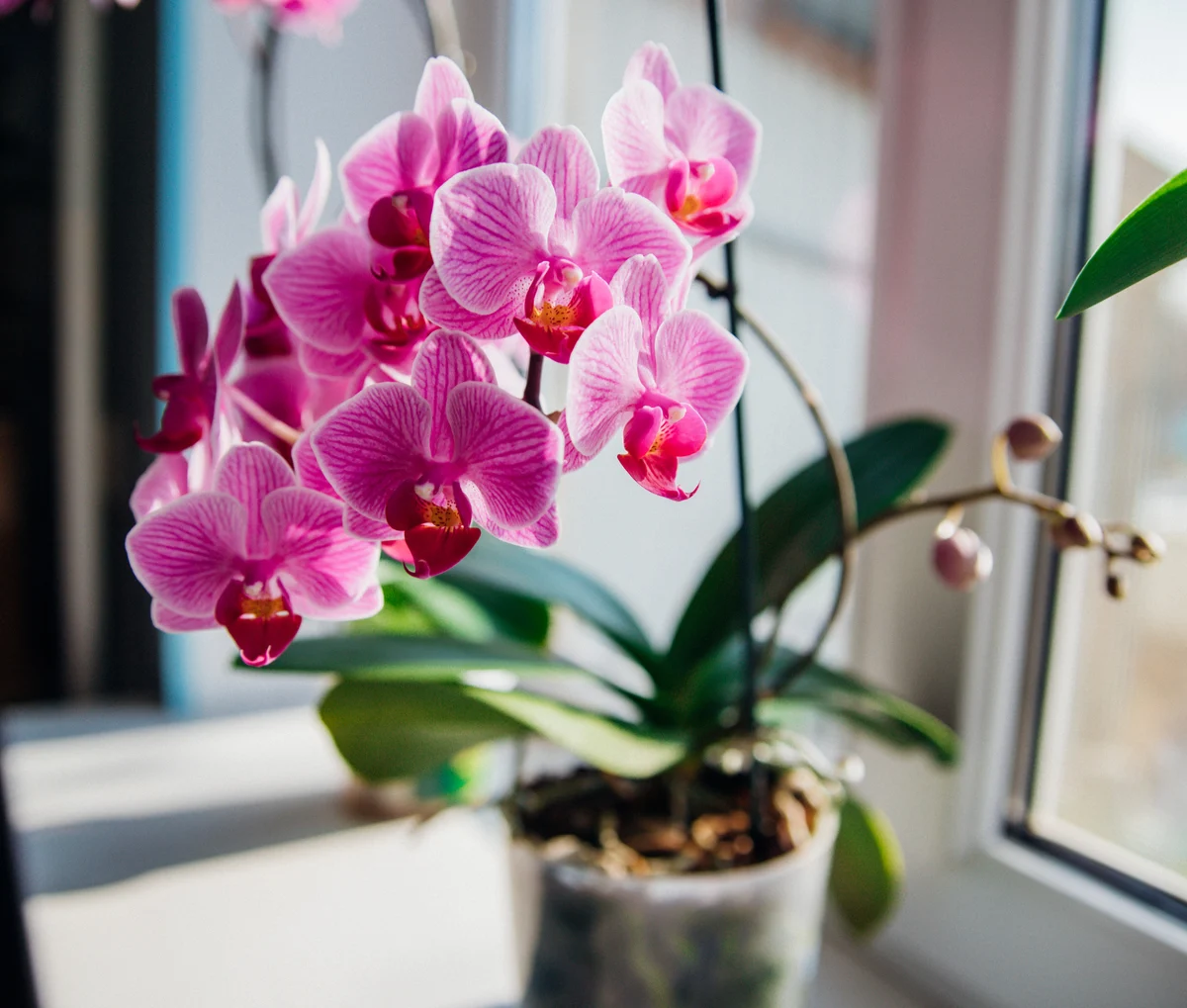
1. Give Your Orchid The Right Amount Of Sunlight
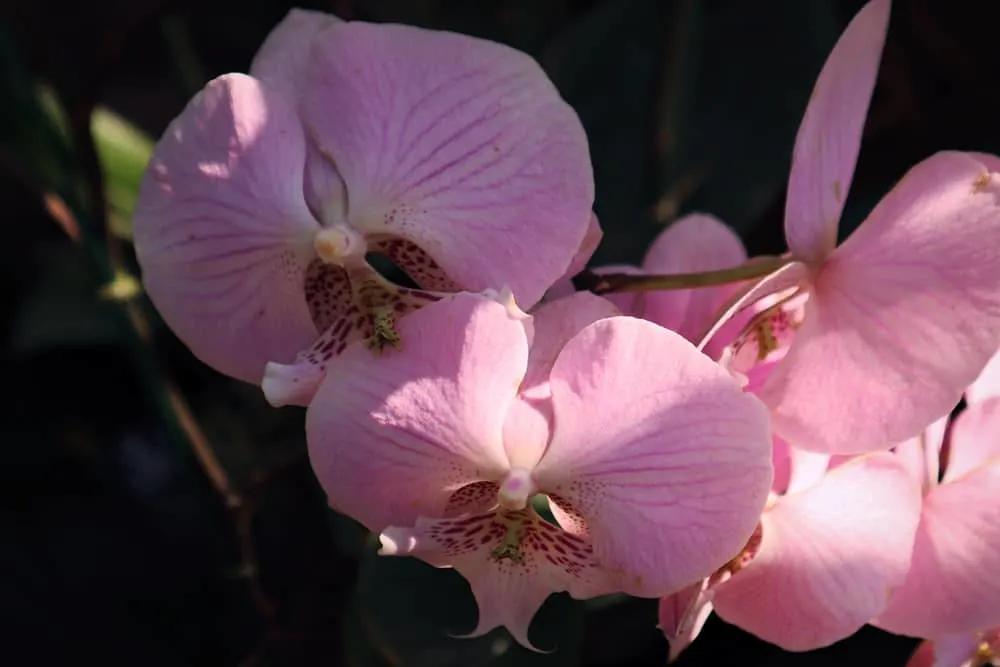
One of the most important factors in keeping orchids healthy (and therefore, more likely to keep blooming) is sunlight.
A look at where they grow naturally will give an idea of what they prefer. Most houseplant orchids come from tropical forest regions where they grow as epiphytes.
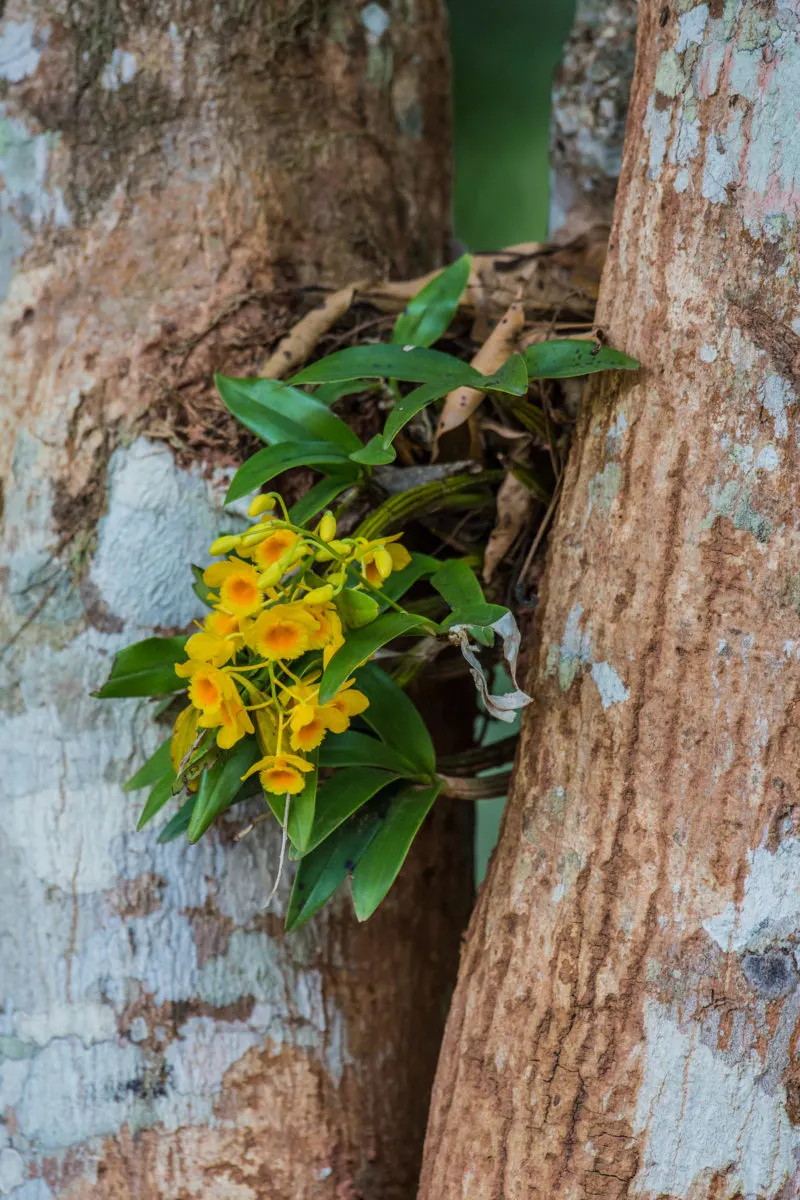
Growing on tree trunks, they get more light than they would on the forest floor, but still remain under the shade of tree canopies.
Variety is also a factor, as different types of orchids require different amounts of light.
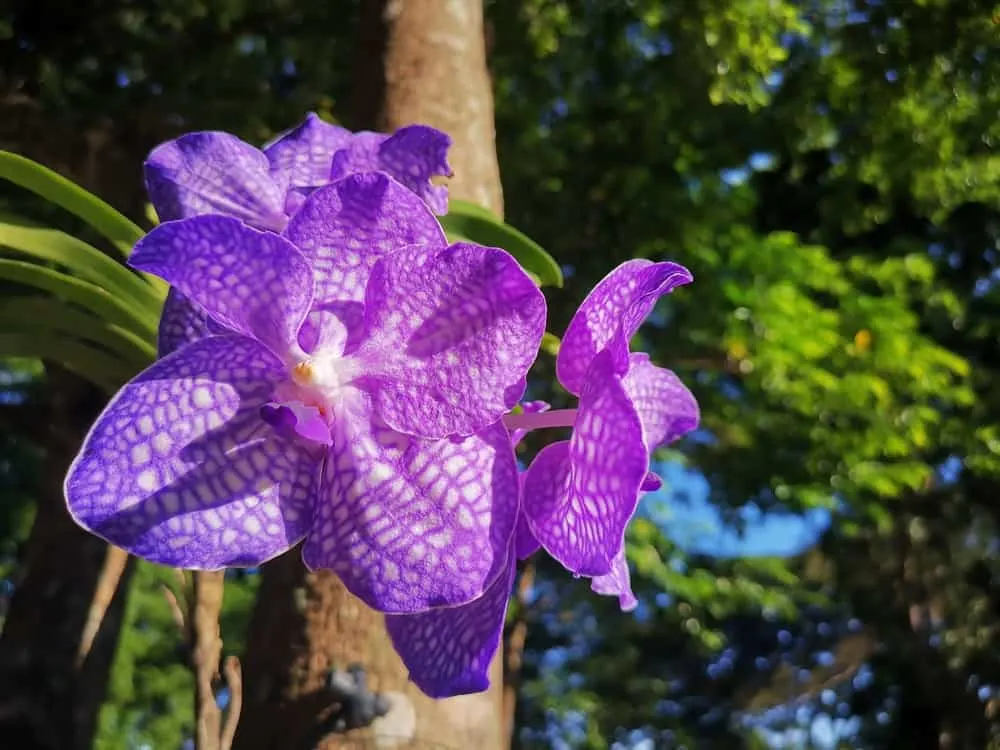
Out of all the orchid species available, 75% of all the orchids produced and sold are Phalaenopsis orchids. According to the American Orchid Society, this is the best type for indoor growth. They need bright light, filtered but not direct sunlight.
Other varieties like Dendrobiums, Cattleyas, and Oncidiums need more sunlight. They require a bright windowsill where sunlight can be filtered through a curtain or a spot outdoors on a patio or balcony.
Cymbidium orchids can bloom for about 8 weeks in a cool, well-lit position indoors. However, they do better set outside in a bright shady area once they have finished flowering. This encourages them to reflower with careful watering and food.
Leaf Color Vs Brightness Level
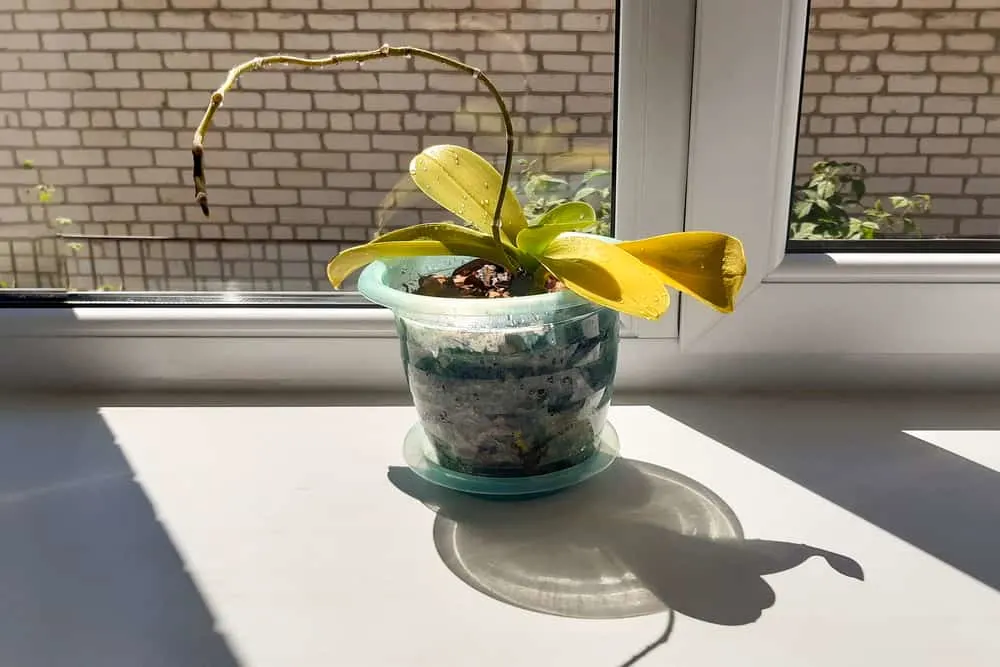
A lack of light for many orchids means poor growth, reduced flowering time, and no re-flowering. On the other hand, direct sunlight may also burn the plant.
Luckily, the leaf color will indicate how happy your orchid is in its current position.
Unlike many other houseplants, dark green is not the color to look for in an orchid. Take a look at these signs to understand your orchid better:
- White leaves or white marks – Intense bright or direct sunlight has burnt and damaged the cells, causing them to die.
- Yellow leaves – The light is too bright, or alternatively there is a nutrient deficiency.
- Vibrant green – The ideal light giving you a better chance of reblooming.
- Intense green – Enough light to keep the plant alive, but it may not reflower.
- Dark green – Not enough light. The plant may survive but will compensate by producing thinner, shorter leaves and no flowers.
2. Water Correctly
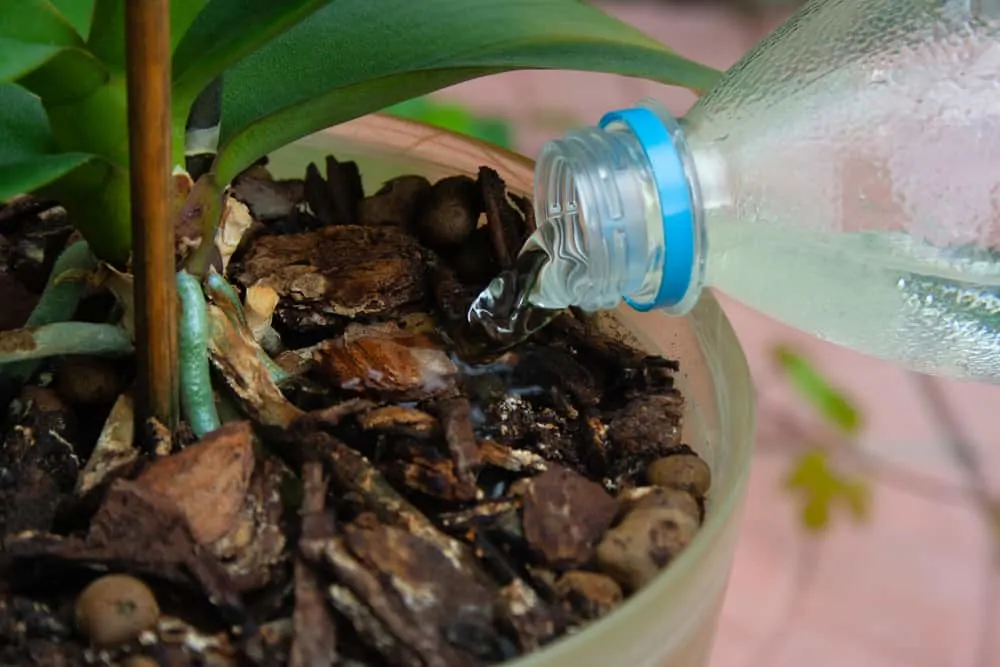
Along with sunlight, watering is also vital in getting your orchid to rebloom.
The type of growing medium is usually a good indicator of the amount of water they need. Free draining bark medium, the standard for store-bought orchids, requires more watering to keep the roots hydrated. Soil mixes containing peat require less watering as it retains more moisture than bark.
It’s best to soak orchids in a basin of water for 5 -10 minutes. This keeps them fully hydrated, rather than flushing past the roots and out of the drainage holes. Allow them to drain for at least 15 minutes before placing them back in their spots.
Overwatered or incorrectly watered orchids will struggle to rebloom. Never allow an orchid to sit in water for long periods and avoid wetting the leaves in the process.
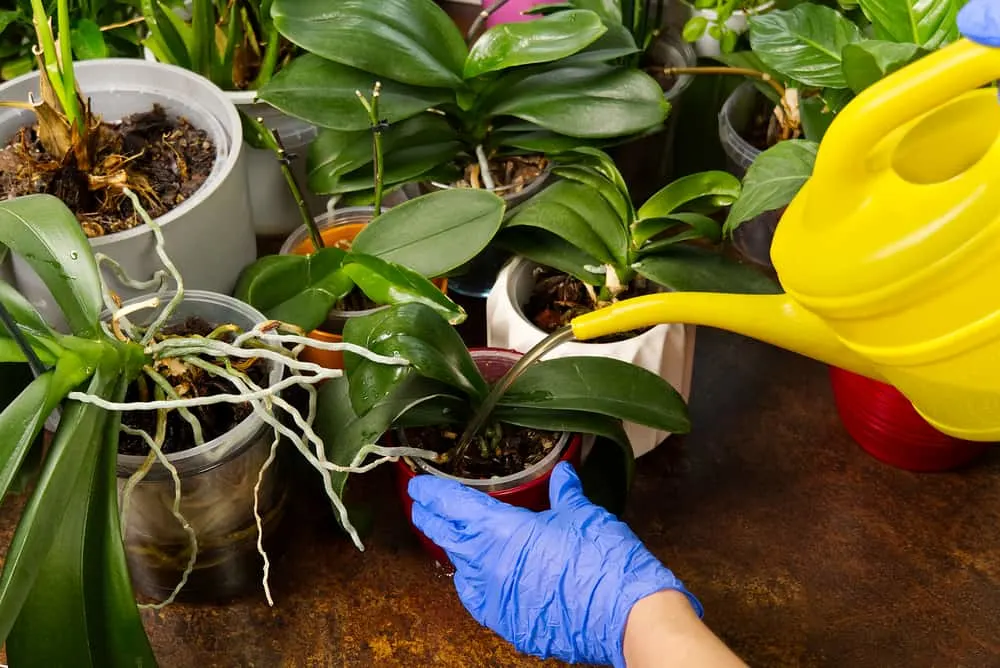
Rather than watering on a schedule, it’s best to test the soil with your finger. If the soil is still saturated, leave it for a few more days. Try water the day before the soil dries out completely for the ideal watering time.
You can also use a sharpened pencil as a guide. Insert the sharpened end into the soil – if the graphite darkens, the soil has enough water. Be careful you don’t damage the roots in the process.
3. Maintain High Humidity
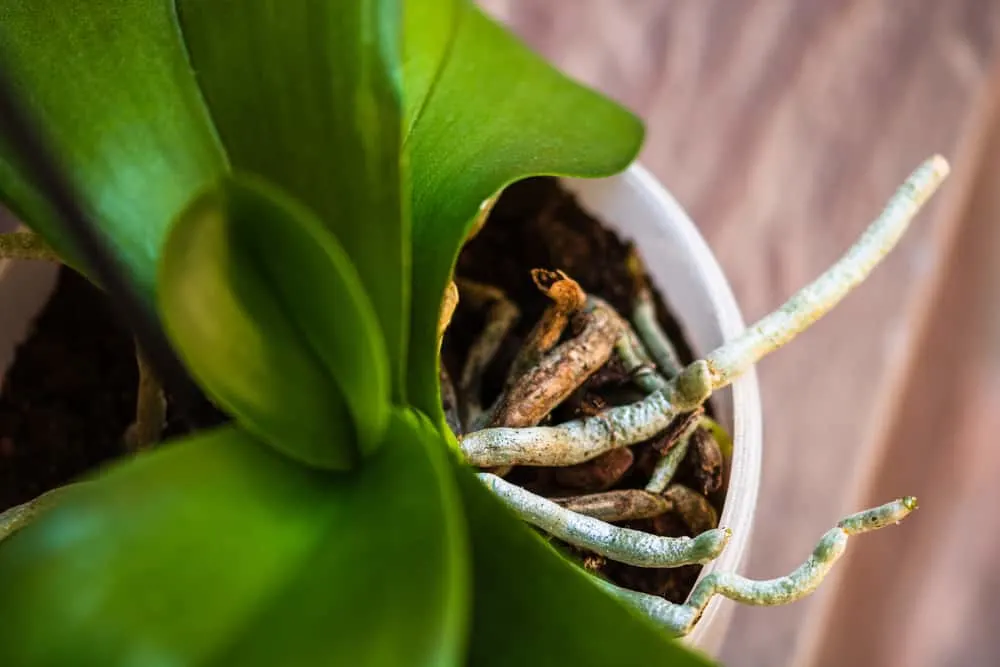
Humidity also plays a role in flowering. Thanks to their tropical conditions, orchids need high humidity levels to produce flowers – preferably around 60%.
In drier areas, add a layer of pebbles to a drip tray and fill with water to increase the humidity slightly. Make sure the roots of the plants do not sit in the water, as this will kill them off quickly.
Misting your orchid is not necessary as the roots are the parts that absorb enough water for the plant to use. Spraying them may increase humidity momentarily, but it can also leave deposits on the leaves and flowers that encourage disease and hinder growth.
4. Keep Temperatures High
Tropical orchids like Phalaenopsis need high temperatures throughout the year to grow well.
The temperature should remain above 60F to provide the right conditions for flowering. Below that, the plant may stop growing, and subsequently, putting out flowers.
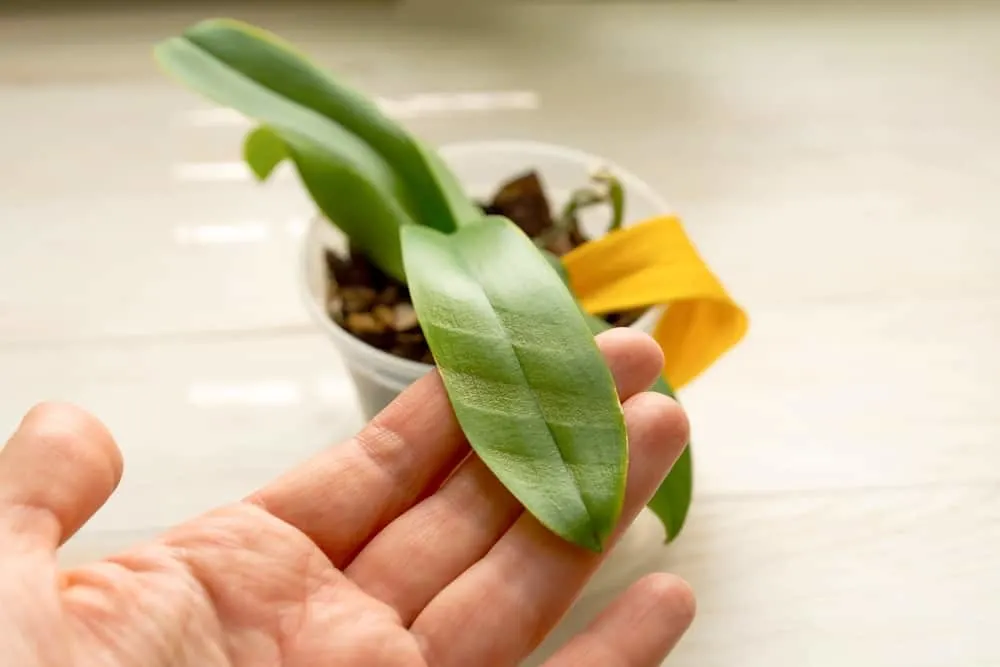
On the opposite end of the spectrum, excessively high temperatures can also inhibit growth. Anything above 85F for long periods will dry out the roots and result in heat stress.
Cymbidiums prefer temperatures that differ between night and day to flower well. This makes it far more difficult to get these orchids to reflower indoors. They are typically better off grown on a patio or balcony, brought indoors when they start flowering to enjoy.
Avoid placing your orchids in the path of drafts. This could also have an effect on the temperature around the plant, making it too cool for them to flower. On the other hand, a gentle breeze is often appreciated for air circulation in warmer areas.
The temperature and the time of the year will be your guide.
5. Ensure The Roots Have Enough Oxygen
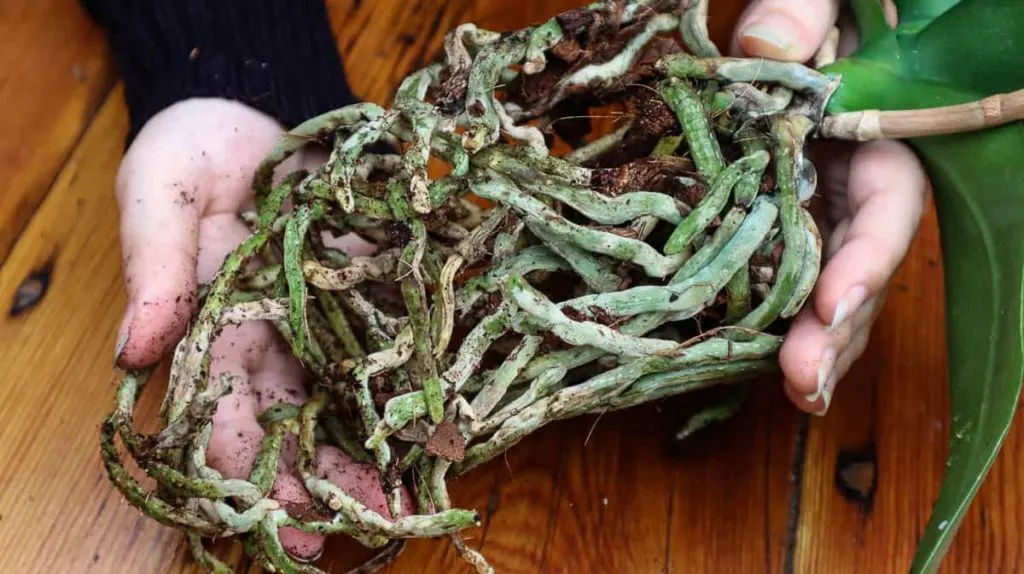
Oxygen doesn’t necessarily help orchids reflower alone. But, it does prevent pests and diseases from taking hold, contributing to overall health.
Make sure your orchids are not crowded together and that each has good air circulation. This is even more important in humid spots as moisture collects around the plants quickly, drawing pests and diseases.
6. Fertilize Regularly
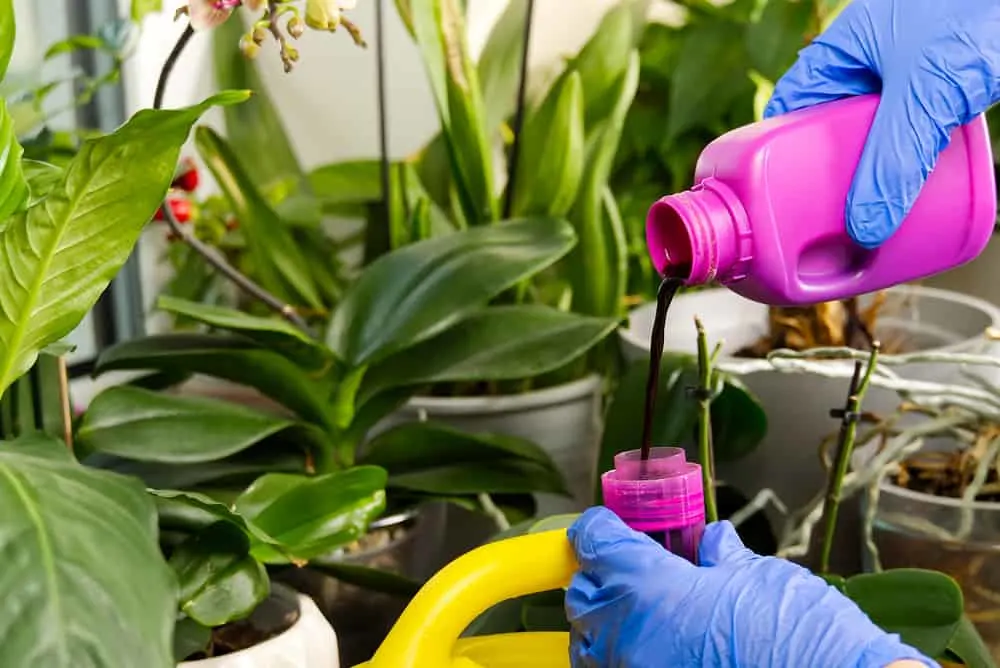
As with all potted plants, nutrients in the soil get used up or flushed out over time. Orchids in particular need an extra boost at the right time to grow well and produce flowers.
There is a common misconception that if you feed an orchid, it is guaranteed to flower. Unfortunately, I wish it were that easy. Along with fertilizer, a combination of light, water, temperature, and airflow will give the plants a better chance of reflowering.
Use a liquid orchid fertilizer designed to encourage flowering for the best results. Feed orchids every 2 weeks in spring and summer with a fertilizer high in nitrogen for strong growth. Switch to a fertilizer high in potassium to promote flowering in fall, applied once per month.
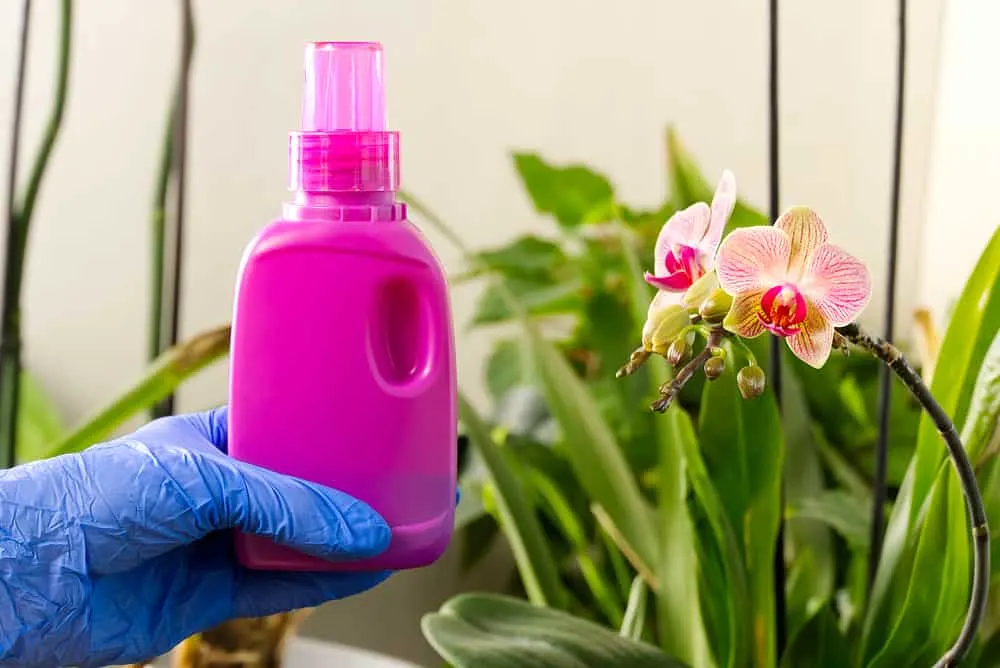
If you feed often, make sure to flush out the pots every month with clean water to avoid build-up of salts that can harm the roots. Only use the recommended amount supplied on the packaging to avoid burning the roots and leaves.
7. Repot At The Right Time
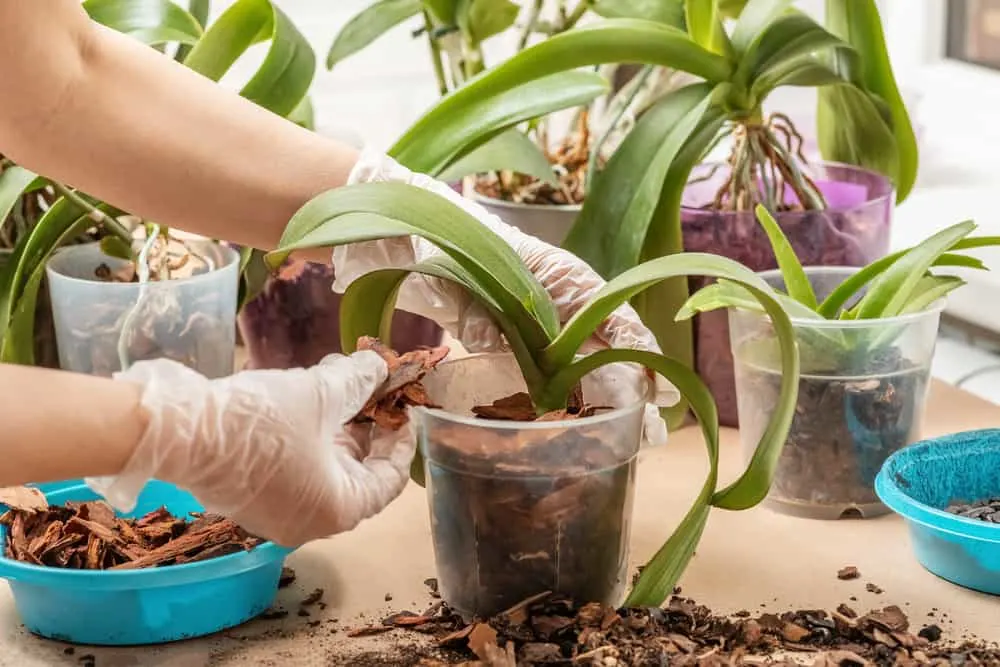
Using a specifically manufactured orchid mix to repot is essential for reflowering.
It’s best to repot orchids every 2-3 years to keep them healthy and flowering. Signs that a plant needs repotting are a lack of growth or poor growth and wilting leaves. Repot in the spring when new growth is expected.
Squeeze the pot to release the plant and take it out gently. Shake off any old bark and soil and cut off any dead roots with a sharp pair of clean secateurs or sterilized pair of scissors.
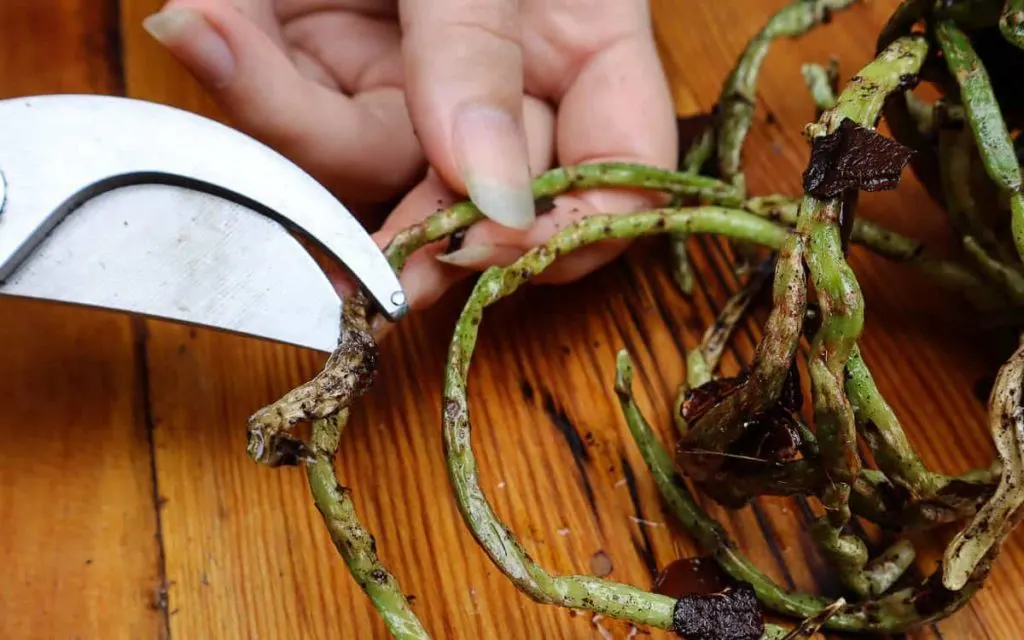
Choose a new pot carefully. Orchids tend to prefer their roots to be crowded and tight in a pot that is very well-draining. Often, you can reuse the same pot and simply give your plant a soil refresh.
Add the plant to the pot and hold it in place while filling in with a new orchid potting medium until it fits well. Water after repotting to saturate the roots.
8. Perform Post-Flowering Maintenance
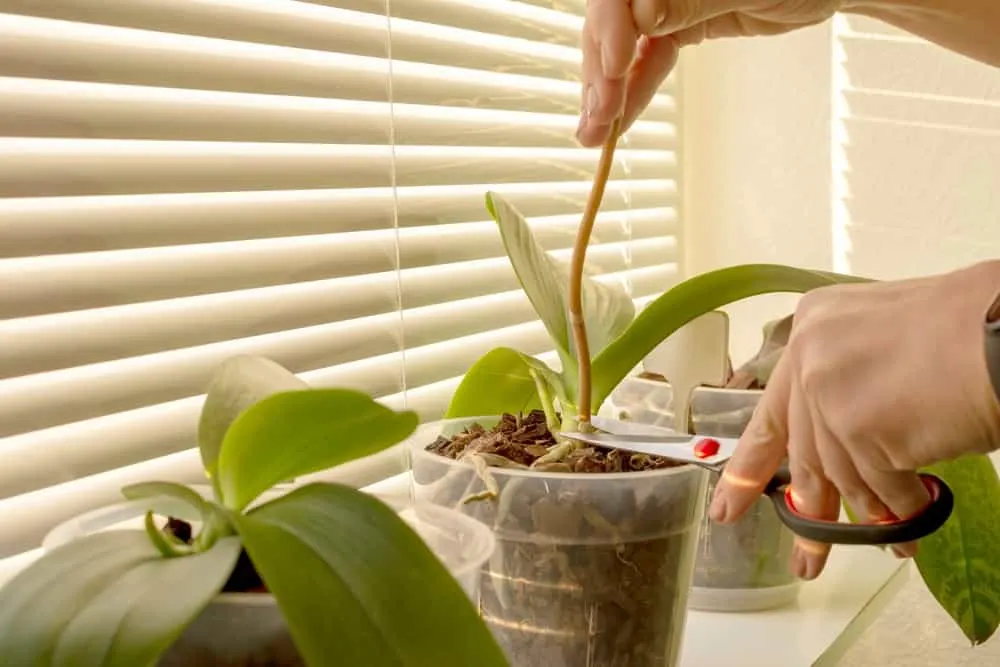
Orchids use all their resources to send out those beautiful blooms and keep them glowing for months at a time. Afterwards, they need time to restore their energy.
In the period of dormancy, many often discard the plant. But with a little care, orchids can live for many years and produce many more flowers.
Each type of orchid has a bloom cycle. It’s best to track each one by labeling them so you know if an orchid is due to flower or not. Some will flower only once a year and others can bloom up to three times in a year.
Remember that the flowering time of a specific type of orchid is not necessarily the time it was bought at the store. Those plants are grown in greenhouses and their growing seasons have been manipulated to produce flowering plants all year round.
You will be left with a flower stem once the flowers have died and fallen off. At this time, you can cut the stem back.
First cut the stem to just above the nearest node, as this can stimulate another stem to form. If no new stem appears and the original stem becomes brown and brittle, cut it off at the base. New flower stems will form from the base of the leaves in the coming months.



